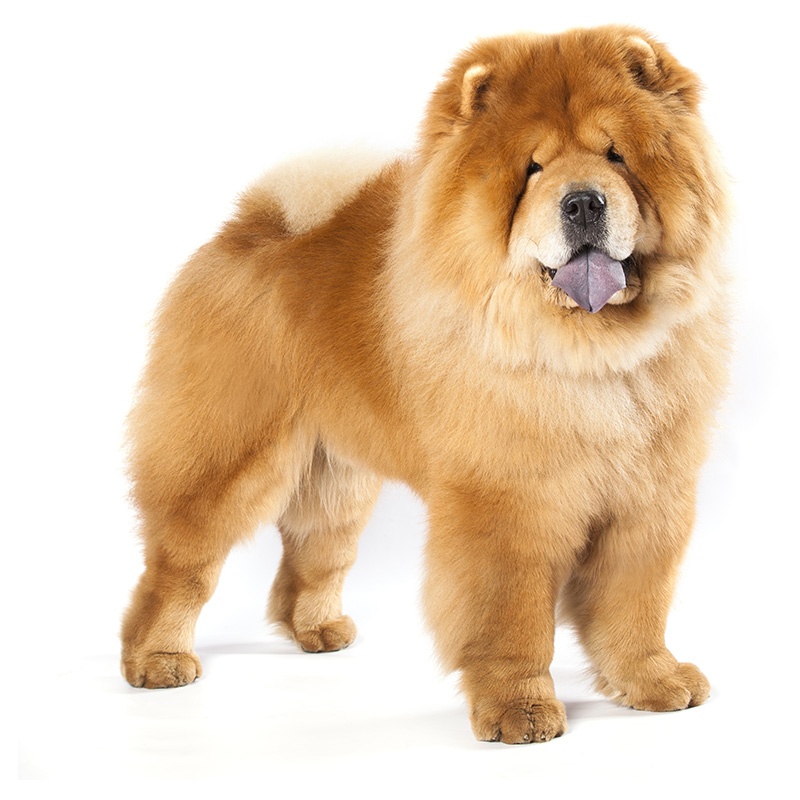Chow Chow
Unique Origin
Experts have speculated that the Chow Chow is one of the oldest dog breeds, and genetic testing has proven that to be true. They are believed to have originated in Mongolia and Northern China, slowly moving south with the nomadic tribes of Mongolia. We can see dogs resembling the Chow Chow in pottery and paintings from the Han Dynasty (206 BC to AD). One Chinese emperor was said to have kept 2,500 pairs of these dogs as hunting dogs. In addition to hunting, the dogs were used to guard their owners’ possessions. The breed went by several names: black tongue dog (hei-shi-tou), wolf dog (lang gou), bear dog (xiang gou), and Canton dog (Guandong gou). How he became the Chow Chow is an interesting story. British merchants in the late 18th century included some of the bearlike dogs in their cargo. Miscellaneous items, including dogs, were referred to as “chow chow” and the name stuck.
Personality
Some compare the Chow Chow’s disposition to that of a cat: aloof, reserved, independent, dignified, intelligent, and stubborn. Despite his appearance, wooly and scowling, a Chow should never be aggressive or shy. They tend to mind their own business and won’t usually be the instigator of trouble. They would rather be around their family than to be alone, but they are not “huggy”. They don’t seem to see the need for cuddling. They will retreat and emotionally withdraw if yelled at or scorned. They will play with their people, but strangers don’t hold any interest for them, unless they’re approaching the Chow’s home without invitation from his owner. In that case, he will most likely challenge the intruder. He will, however, let strangers touch him if introduced by one of his owners. The owner of the Chow Chow must be prepared to socialize this dog extensively with new people, dogs, and situations from the time he is the most impressionable as a puppy if he is going to be safe and relaxed as an adult. When the Chow is raised with children and properly taught, he can do well with them, but they are not a rough and tumble dog that will tolerate abuse from a young child. They do best in families with older children who understand how to treat a dog. As with any dog, always teach children how to approach and touch your Chow, and supervise all interactions between dogs and young children. Chows who have been correctly socialized and trained can get along with other dogs and cats, especially if they are introduced to them in puppyhood, and they do better with animals of the opposite sex.
Appearance
Chows can have two coat types, rough and smooth. The rough coat is the most common and is thick and abundant, standing off from the body like a parka. Beneath that coat there is a soft, thick, wooly undercoat. Hair is thicker around the head and neck, forming a ruff or mane. The tail should lie over the back and is thickly furred. The smooth coat is hard, dense, and smooth with no obvious ruff or mane. One of the most notable characteristics is the black tongue characteristic of the breed.
Interesting Facts
Martha Stewart’s Chow Chow Genghis Khan won Best in Breed at Westminster in 2012. A dog named Jarod saved his owner and another dog from an attacking black bear.
